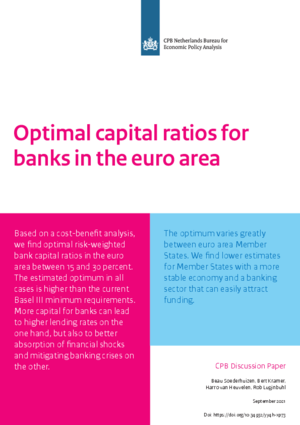Optimal capital ratios for banks in the euro area

In this study, we estimate the optimal level of capital for banks in the euro area. As far as we know, we are the first to investigate this for the euro area. The optimal level results from a trade-off between the social costs and benefits of capital requirements. Depending on technical assumptions, we find an optimal capital buffer between 15 and 30 percent. Despite this considerable spread, the estimated optimum is in all cases higher than the current minimum requirements of Basel III. We also find significant heterogeneity in the optimum between euro area Member States. For Member States with a more stable economy and a banking sector that can easily attract funding we find lower optimal capital ratios.
Downloads
This analysis is a first step. For example, we estimate the marginal benefits not per country but per group of countries. We thus make no statements about the current capital position of banks in individual member states. In addition, assuming that banks have only domestic exposures is problematic for individual Member States, especially for small and open economies such as the Netherlands. Among other things, a better insight into the international interconnectedness of banks is necessary in order to arrive at an assessment of the social costs and benefits of optimal capital ratios.
Authors




